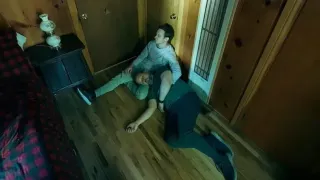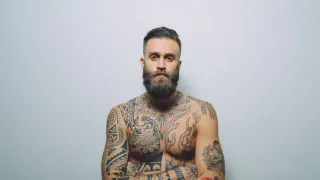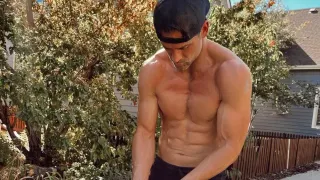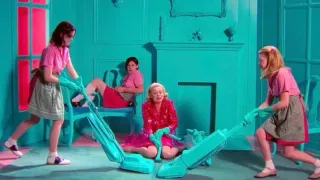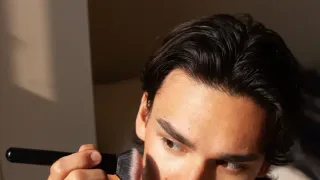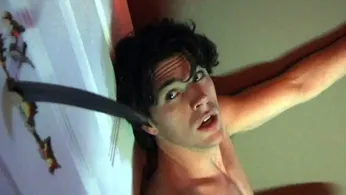
4 hours ago
How Queer Filmmakers Are Making Horror Their Safe Space
READ TIME: 3 MIN.
For decades, horror has served as an uneasy home for queer audiences and creators—a genre where monsters, outsiders, and the uncanny often provided coded mirrors for lives lived on the margins. Today, that subtext has become text, as a new generation of LGBTQ+ filmmakers and storytellers take control of the narrative, making horror films that unapologetically center queer characters, themes, and creators. This shift is transforming horror into a safe space—not just for catharsis, but for celebration and solidarity.
The relationship between queerness and horror is long and layered, rooted in both the genre’s themes of otherness and its tradition of subversion. For many LGBTQ+ people, horror’s monsters and outcasts have always felt familiar—symbols of both fear and empowerment. Films like "Cat People" (1942), written by gay screenwriter DeWitt Bodeen, wove queer longing and repression into their very DNA, even if audiences had to read between the lines.
As queer representation moved from subtext to explicit narrative, the genre’s appeal only deepened. “Queer horror allows us to explore the monstrosity that society projects onto us—and to reclaim it,” notes film critic Drew Gregory, highlighting how horror gives queer creators the freedom to defy norms and embrace complex, often contradictory identities. The trope of the monster, once a metaphor for internalized shame, becomes a powerful emblem of resilience and difference.
The 2004 slasher "Hellbent" is often cited as the first gay slasher film, notable for placing openly queer characters at the center of the narrative rather than relegating them to side roles or tragic endings. Its legacy endures in a wave of recent films that refuse to compromise on queer visibility.
In 2022, "Bodies Bodies Bodies" broke fresh ground by featuring a predominantly queer cast and exploring themes of performative friendship, suspicion, and the dangers lurking within tight-knit communities. Instead of using queerness as a source of horror, the film treats it as a given, allowing its characters to be as flawed, funny, and fierce as their straight counterparts.
Other recent releases, like "T-Blockers" (2023), foreground trans experiences, blending genre conventions with urgent social commentary. Described as “a hodgepodge of genres coming together to tell a story about being a teen trans girl in 2023,” the film uses body horror and invasion tropes to examine identity and transformation, drawing directly on the lived realities of transgender people.
The first half of 2025 has already marked a banner year for queer horror, with films exploring everything from haunted houses to haunted minds, queer obsession, and coming-of-age stories.
- "Dead Mail" (2025) stands out as a surreal, queer-inflected oddity about loneliness, obsession, and the macabre, set against the unlikely backdrop of competitive synthesizer building. Its unapologetically queer sensibility is woven into every frame, making it “the definition of a hidden gem” for LGBTQ+ audiences seeking representation that feels both authentic and strange.
- "Fréwaka", an Irish-language folk horror film, centers on Shoo, a lesbian caretaker grappling with grief, trauma, and a possible supernatural threat. The film’s refusal to reduce its characters to stereotypes or to sidestep their queerness is emblematic of a genre in transformation, where horror becomes a vehicle for exploring not just fear, but intimacy and healing.
- "Clown in a Cornfield" reimagines the teen slasher with a queer twist, bringing LGBTQ+ visibility to a genre long dominated by heteronormative tropes. The film’s narrative stakes are heightened by its meaningful queer plot developments, signaling a broader industry trend toward stories that reflect the full spectrum of audience experience.
For many LGBTQ+ viewers, horror is more than escapism—it’s a way to process trauma, confront stigma, and find solidarity with others who know what it means to be cast as the outsider. Films like "Sleepaway Camp II: Unhappy Campers" (1988) have been reappraised for their subversive takes on gender and identity, offering rare examples of female slasher villains whose motivations are not rooted in psychosis but in their own agency and insistence on order.
The rise of horror festivals and streaming collections dedicated to queer horror, such as those curated by Autostraddle and Shudder, has further cemented the genre’s status as a communal safe space. These platforms highlight not just new releases, but also classics and deep cuts—from the witchy revenge of "All Cheerleaders Die" to the eco-horror of "Annihilation" and the campy delights of "The Craft".
As queer filmmakers continue to push boundaries, horror stands out as a space where LGBTQ+ people can explore their fears, desires, and identities without apology. With more creators openly identifying as queer and more stories reflecting the diversity of the community, the future of the genre looks set to be as inclusive as it is inventive.
Whether through cathartic scares, biting satire, or unabashed camp, queer horror is here to stay—redefining what it means to be monstrous, and why that might just be the safest place to be.
